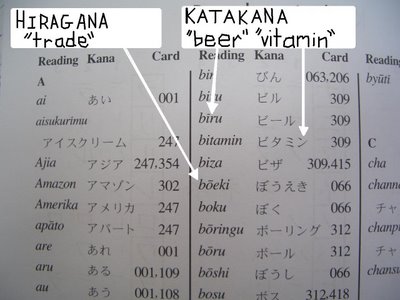
Hiragana, Katakana, Kanji:
I’ve been vigilantly studying the language. I go in phases, sometimes I work on conversational communication, then I tire of that and switch to studying the Japanese characters and writing- this is what I’ve been really into lately. For those of you who are unfamiliar with Japanese written language, let me quickly try to attempt an explanation, although keep in mind that I am no expert! Japanese use three types of characters when writing: Hiragana, Katakana, and Kanji. Hiragana and Katakana, referred to simply as Kana, are phonetic symbols (sound chunks) and represent pronunciation, whereas Kanji are Chinese characters that have been assimilated into the Japanese language and represent ideas or concepts. There are 46 Hiragana and 46 Katakana characters and with some solid studying, I’ve found they are relatively easy to learn in a matter of a few weeks. Kanji, however, is another story! There are over 20,000 Kanji and many are so detailed and have so many subtle variations that they are very difficult to learn and take daily exposure and study. I’ve heard that if one were to learn between 250 and 500 of the most common Kanji, you’d be able to read most if the signs and newspapers in Japan. But to master Kanji takes a lifetime of study. My supervisor once told me that even Japanese adults sometimes come across a Kanji that they don’t know. Kanji I’ll save for later, right now I’m working on my mastery of the Kana. The more curvy, swirly Hiragana underlies the basic structure of the Japanese writing system, whereas the more angular Katakana is used to construct sounds of foreign origin. This is helpful because if you recognize the angular Katakana, you know it will most likely be a foreign (most likely English) word being represented- you just need to sound it out and smoosh the sounds together and you’ll figure it out. For example: “cho-ko-re-tu” is… chocolate, and, “in-ta-byu” is…interview. See? If you see the curvy Hiragana, then your mind will prepare to start scanning through the files of Japanese vocabulary it is familiar with. Kanji is easy to identify because it is block-like, and has many dense, detailed marks. (see the pictures above and below). Currently I have learned all the 92 Kana characters and what their sounds are. But this doesn’t mean I can read quickly! Imagine a 2nd grader who knows all the letters and sounds, but needs some time to blend them together to make words… that’s me! I’m getting faster though and am, of course, exposed constantly. One of my favorite things to do if I’m waiting for the train or something is to read the Hiragana and Katakana on the signs around me. Katakana I can usually figure out the foreign word, and when I sound out a Hiragana word, I look it up in my little dictionary and when I find it I feel all warm and fuzzy inside. The hard part is remembering new vocab words!

0 Comments:
Post a Comment
<< Home